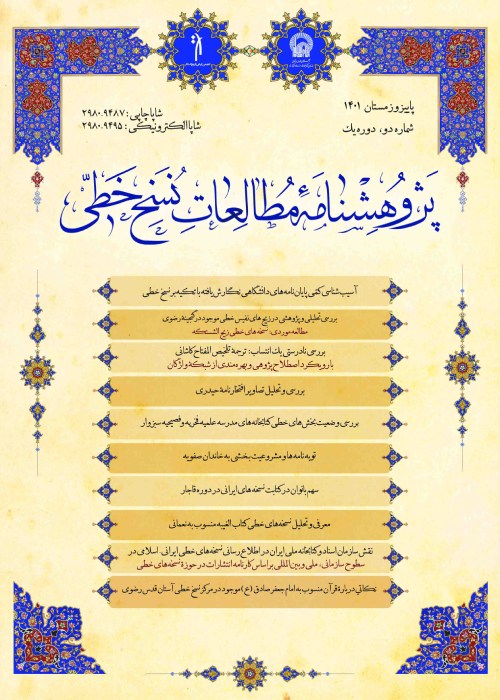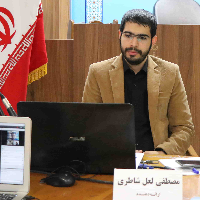Delving into Lithographic Technique in the Qajar Period Based on Mīrzā ‘Alī-Qulī Khuī’s Illustration (Basic Requirements, Technical Features and Executive Factors)
The arrival of the printing industry in Iran during the Qajar period (1294/1833) is considered to be among the turning points, which created a significant change in the production and publication of written works. With the spread of this type of printing in Iran and the subsequent establishment of the early printing houses in Tabriz, Tehran and later on in other cities, the process of works needed by society was accelerated and the previous restrictions on access to books were largely removed. Subsequently, many printed books with different themes and at a very low cost compared to manuscripts became available to various social strata. In the meantime, one of the most important issues is to know how the lithographic printing houses worked in this period. The present research is intended to answer the question as to what has been the technique used in lithographic printing houses of the Qajar period (basic requirements, technical features and executive factors) - regardless of the analysis of the structures governing the society, content study, features and the reason behind the production of the published works as well as identification of the people active in this field and their advocates?
Research/Method Approach:
The structure of this research is organized on the basis of descriptive-analytical method and on library, documentary, and archival study with an interdisciplinary approach.
Given the cessation of the activities of the lithographic printing houses since the late Qajar period and the lack of reference in primary sources to the technique of this type of printing, according to a single available evidence (a painting of a printing house in 1264/1847 by Mīrzā ‘Alī-Qulī Khu’ī), the findings suggest that that basic requirements such as printing machine, stone, ink and paper have had a significant role in the operation of the printing house and based on the order rate and the extent of the printing house, and an average of eight people (a printing master, a sheet liner, a wheel turner, an ink worker, an ink maker, a stone polisher, an acid producer, and a bookbinder) have been working on a regular basis and two people (a scribe and a painter) working on a non-in-person basis in interaction with the management of the printing house. In the meantime, the printing method was that of a flat mode and the execution stages had a fixed and recurring process. Consequently, access to manpower and raw materials has fluctuated the speed and quality of publication. In order to remove ambiguity and reduce diversity of views and unsubstantiated opinions, the present research consistently examines the lithographic technique of the Qajar period with a scientific and analysis-oriented approach, which can be considered as the closest summary to this type of printing.
- حق عضویت دریافتی صرف حمایت از نشریات عضو و نگهداری، تکمیل و توسعه مگیران میشود.
- پرداخت حق اشتراک و دانلود مقالات اجازه بازنشر آن در سایر رسانههای چاپی و دیجیتال را به کاربر نمیدهد.



